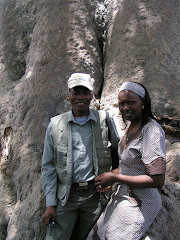1. HIV/AIDS Scourge
The HIV/AIDS epidemic has had serious dire consequences for children, most notably in fuelling the orphan crisis. Using the international definition which states that an orphan is a “child below the age of 18 who has lost one or both parents” the prevalence of orphans among children below 18 years in Botswana is 17.2% (137,805 children) (National Situation Analysis 2007). The Botswana definition states that an orphan is a ‘child below 18 years who has lost one (single) or both parents (married couples), biological or adoptive, the prevalence of orphans among children below 18 years stands at 6.5% (51,806 children by end of 2007).
Orphans are potentially extremely vulnerable to child abuse and exploitation, to withdrawal from education, to child labour, to emotional distress and trauma. It is recognised that orphans and vulnerable children have complex psychosocial needs which cannot be met by food baskets alone. Elderly female care givers are under serious stress due to role reversal. The movement of children between relatives for access to their benefits, for domestic and agricultural labour is a cause of concern.
The impact of the scourge is also experienced by children who are not necessarily orphaned. The National Situation Analysis 2007 found a prevalence rate of 4.4%, for children vulnerable because they lived in a household where there was a person who had been critically ill for at least 3 months.
2. Poverty
Children can become vulnerable due to poverty and especially absolute poverty. In the National Situation Analysis 30.6% of the children were found to be vulnerable because they lived in a household where there is no one gainfully employed. The effects of poverty are being compounded by the impacts of environmental factors including drought, flooding and climate change which can lead to loss of livelihoods and homes and internal displacement.
3. Dysfunctional families
Some children struggle to grow up in families prone to internal conflicts, alcoholism, violence, abuse and poor parenting skills. These children are unlikely to enjoy their fundamental rights and are even driven onto the streets to support themselves. Children with unmet emotional needs are also particularly vulnerable to sexual exploitation.
4. Discrimination and marginalisation of minority groups
Some children from minority groups, especially San children can be found living in appalling conditions in squatter encampments on the outskirts of some of the country’s towns and large villages. These children’s basic rights to education, health care and shelter are compromised. They are extremely vulnerable to abuse.
5. Abandonment, child labour and Child headed households
A child may be vulnerable due to a wide range of circumstances such as abandonment, child labour, heading a household, living in a household headed by a child, disability, internal displacement, illegal immigration, separation from parents, imprisonment of parents especially mothers, residence in squatter settlements, residence on remote farms and unmet psychosocial needs even in financially secure families.
6. Gender Issues
Boys and girls may be vulnerable, but in gender specific ways. Girls are more likely to be sexually abused, engaged in transactional and intergenerational sex, and used in domestic labour. Boys may be withdrawn from school for agricultural labour or to work on the streets. Both boys and girls are heading households and caring for their younger siblings.
7. The health status of children
35.5% of Botswana’s population is under the age of 15 years. In terms of health status, the country has relatively high infant mortality and under-five mortality rates [87 & 120 per 1,000 live births respectively ] and it is estimated that around 14,000 children aged 0-14 years are living with HIV. The good news is that in 2005, 84% of these children who were in need received ART, the highest percentage in sub-Saharan Africa .
8. Access and retention of children in education
While there is high enrolment rate of children into primary education [almost 95%], not all these children complete their basic education, and drop out rates are high in remoter rural areas.
Pre school provision remains very patchy and is largely provided by civil society organisations with limited and often insecure access to resources. Although 2009 will see the beginning of the roll out of formal pre-school education for four year olds, this will still leave a significant unmet need.











No comments:
Post a Comment